
views
Feeding a Proper Diet to Prevent Chewing
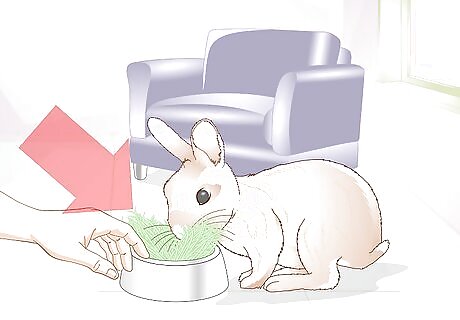
Provide plenty of fresh grass or hay. Rabbits need to chew on grass or hay every day to keep their teeth worn down and to get the nutrients they need to thrive. Ensuring that your rabbit always has a supply of fresh, growing grass or good quality hay will reduce the chances that she will chew on your furniture. Timothy hay is a great choice and you can find it in pet stores.
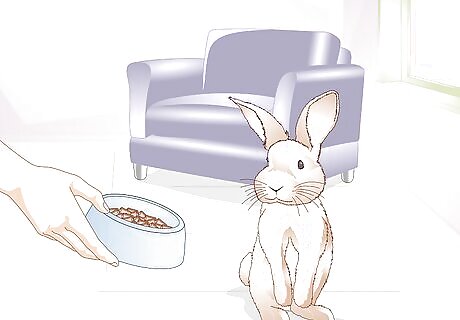
Give your rabbit some pellets. Pellets can also offer your rabbit some valuable nutrition and something appropriate to chew on. Rabbits don’t need a lot of pellets though. Provide 1/8 to 1/4 cup of pellets for every 6 pounds of body weight. You may need to adjust the amount of pellets that you give your rabbit depending on her weight and activity level. For example, if your rabbit is underweight or still growing, then she may be able to have more pellets. Ask your veterinarian if you are not sure.

Offer your rabbit some vegetables. Chewing on dark leafy greens and crunchy vegetables will also help keep your rabbit’s teeth worn down and reduce her urge to chew on your furniture. Some good veggies to give your rabbit include: romaine lettuce dandelion greens kale collard greens fresh herbs such as parsley, cilantro, basil carrots (one 2 inch piece per day) carrot tops
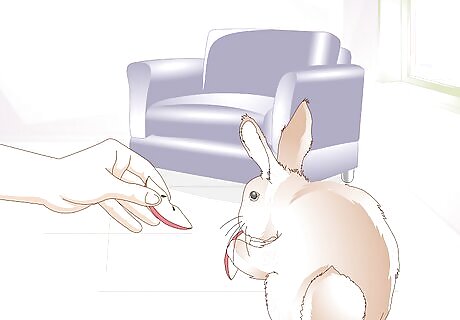
Treat your rabbit now and then. Fruit and hulled sunflower seeds can make a nice treat for your rabbit, which may also reduce her urge to chew on your furniture. Giving your rabbit a treat can also be a good distraction tactic if you catch her in the act. Try offering your rabbit one treat per day, such as: a couple of apple slices a few banana slices a teaspoon of hulled sunflower seeds
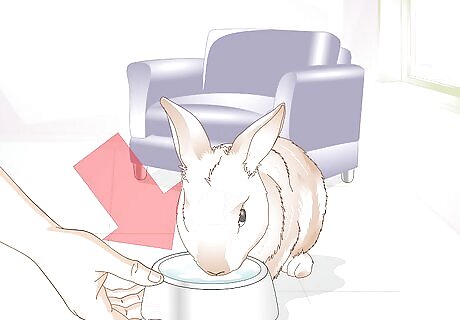
Keep your rabbit hydrated. Giving your rabbit plenty of fresh water every day may not keep her from chewing on your furniture, but rabbits need water to stay hydrated and healthy. Provide your rabbit with fresh clean water at all times and check her supply at least once per day to ensure that she has enough water. You can give a rabbit her water in a ceramic dish or in a sipper bottle. Either is fine, but a sipper bottle is less likely to spill or get contaminated with food or feces.
Redirecting Your Rabbit With Entertainment

Give your rabbit something else to chew. Rabbits chew in order to file down their teeth and to entertain themselves. Your rabbit might chew on your furniture if nothing else is available for her to chew. Fortunately, there are lots of things you can offer your rabbit (just make sure not to feed her human food that may be toxic to her). Rabbits love to chew: Fruit branches (apple), willow branches, aspen branches Cardboard boxes Chew toys Cotton towels (as long as she doesn't eat them) Untreated pieces of pine lumber Compressed alfalfa cubes Phone books Untreated wood blocks
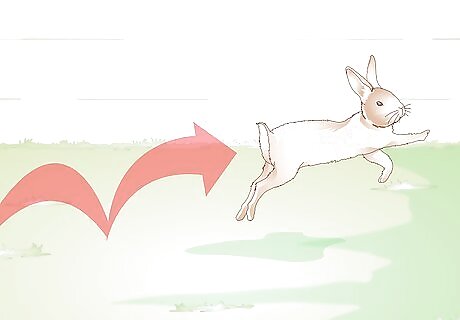
Let her run around. Your rabbit may be chewing the furniture if she's bored. Give her a safe enclosed space to run around and explore. If you can, let her run around outside where she can burn off energy and chew on hay or grass. Pay attention when your rabbit is running around outside. Make sure predators can't get to her. If she's running around inside, make sure she doesn't chew on electrical cords or get stuck behind furniture.

Create a digging box. Entertain and distract your rabbit by making her an indoor digging burrow. Fill a large cardboard box with hay or shredded paper. Let her hop in and dig into the hay. She can also chew the box. Add cardboard tubes that your rabbit can toss around. You might want to cut another hole in the side of the box so your rabbit has another way in and out of the box. Check to make sure that your rabbit doesn't toilet in the box. You may need to replace shredded hay and paper after a few days or once your rabbit loses interest in them.
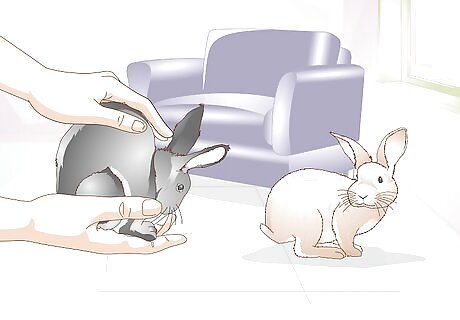
Give your rabbit a friend. Your rabbit might be chewing out of boredom. If she's been destroying furniture or chewing inappropriate things like wires, she might need company. Consider getting another rabbit so your rabbit can have social interaction. This may distract her from destructive chewing. If you choose to get another rabbit, consider the commitment. Decide whether you want the responsibility of caring for another rabbit.
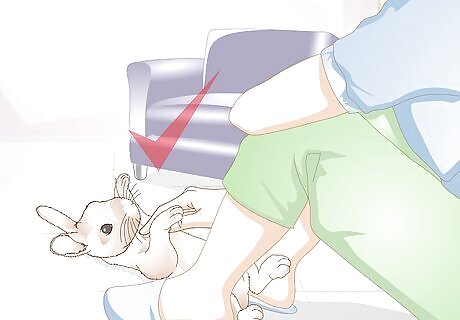
Spend time with your rabbit. Does it feel like your rabbit chews on the furniture to get your attention? Try to spend more time simply playing and snuggling with your rabbit. Lay on the floor and let her hop around you. Talk to your rabbit and pet her so she feels relaxed around you. You can also toss her toys like cardboard tubes or chew toys. While you can buy chew toys from the pet store, you can also let her play with toddler toys or baby teethers.
Creating a Chew-Friendly Space
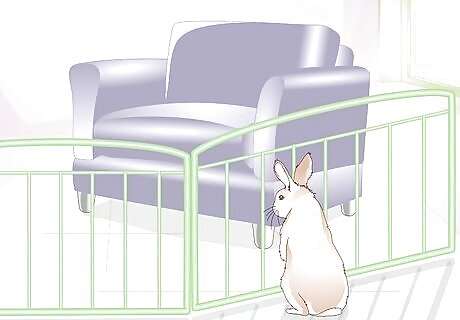
Keep certain areas off limits. You may want to move valuable pieces of furniture into an area that's closed off to your rabbit, at least until you've trained her not to chew furniture. If you don't want to keep the door to the room closed, use a tall baby gate that she can't hop over. You may want to remove wicker furniture or baskets. Your rabbit will have a hard time distinguishing between wicker that's inappropriate to chew and fruit branches that you allow her to chew.
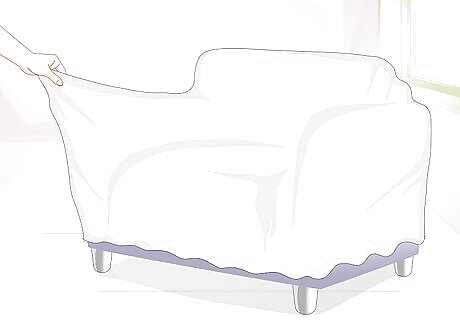
Cover the furniture. Hide the furniture from your rabbit by draping large thick blankets over it. This way, your rabbit can't get to the actual furniture. Consider doing this while you work with your rabbit to control her chewing behavior. Once you can trust her not to chew the furniture, remove the covers. Consider replacing wooden furniture with metal or glass furniture which will keep your rabbit from chewing.
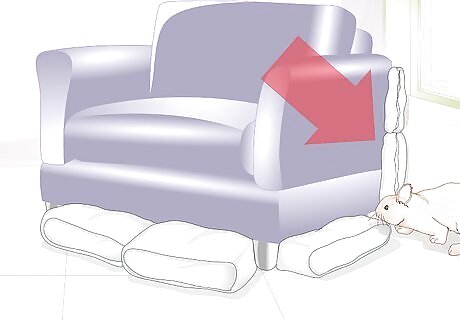
Block off the backs of your furniture. If your rabbit has been hopping behind the furniture to chew at the back, you'll need to block the furniture or her access. Rabbits enjoy running through crawl spaces, but these can be dangerous, especially if she gets stuck or chews exposed nails or finish on the furniture. Use blocking material to cover the backs of furniture or close off her crawl spaces. For example, if your rabbit likes to hop under the couch to get behind it, try stuffing the space under the couch with pillows. This keeps her from getting under and behind the couch.
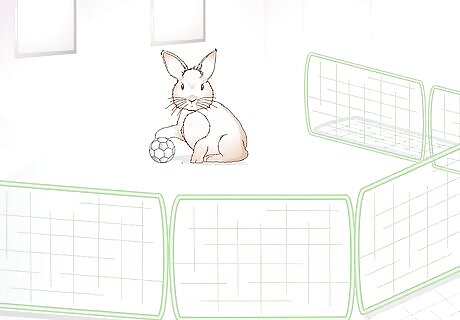
Set up a safe rabbit space. If you can't rabbit-proof dangerous parts of your home, use large wire panels or grids to block off a large space. Or, securely attach a low wooden doorway that you can easily get through (just make sure it's tall enough that your rabbit can't hop over it). If you want to install something permanent, try setting up moveable wire or panels first. This way, you can determine if your rabbit is safe in the area, or if you need to block off more or less space.
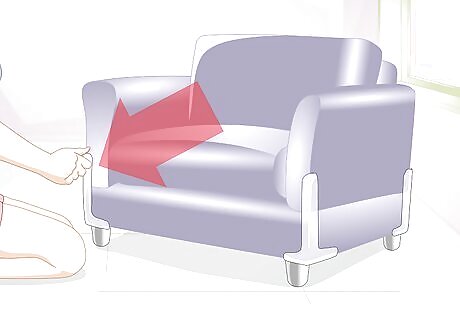
Protect furniture edges and corners. If you don't want to completely cover your furniture, think about buying clear plastic baby-proofing rails and corner guards. Place these along the edges and corners of your furniture to keep your rabbit from chewing. You can also use these on painted walls, if you find your rabbit chewing them. Clear or metal corner guards can keep your rabbit from eating paint.
Controlling Chewing Behavior

Spay your rabbit. Female rabbits are more likely to want to chew, but spaying her can reduce this urge. Try to spay your rabbit before she's 4 to 6 months old. If she's already older than that, just get her spayed when you can. If she's over two years old, get her examined before spaying. If your rabbit is already spayed, but still chews a lot you may just need to wait for her to outgrow this tendency.
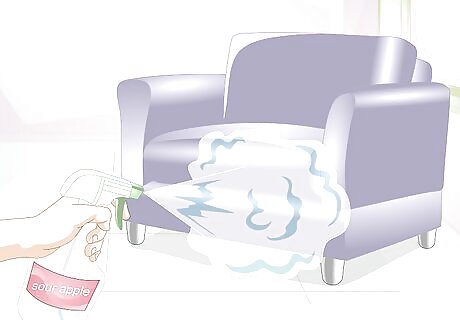
Spray your furniture with taste deterrents. Stop your rabbit from chewing furniture by making the furniture taste bad. You can buy sour apple spray or other bad-tasting deterrent sprays from a pet store. Tasting the deterrent should keep your rabbit from chewing the furniture in the future. Avoid spraying things like perfume or chili oil onto the furniture. Instead, use a product made for rabbits or small animals and use it according to the manufacturer's instructions.
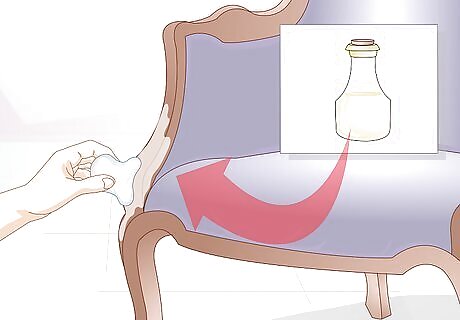
Dab an oil on your furniture. If you prefer not to buy a bad tasting spray deterrent, look for alternatives you already have at home. Dab a little oil on a cloth and spread it along the edges of your wooden furniture. Your rabbit won't like the taste and will avoid chewing there. You can use olive oil or a few drops of cinnamon, lavender, or mint essential oils. Once the scent disappears, reapply the oil so your rabbit avoids the furniture.
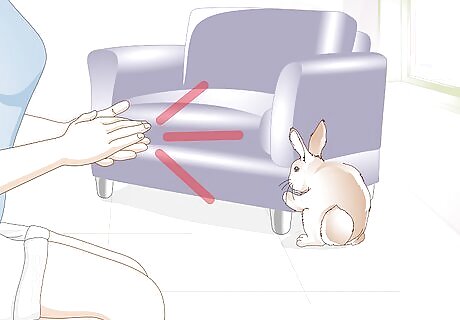
Discipline your rabbit. When your rabbit starts to chew on the furniture, spray her with water or clap loudly to get her attention and say, "no bite." Move her away from the furniture and offer her something that is alright to chew, like a teether or chew toy. Be consistent, but always remember to work with your rabbit. Chewing is just a natural urge for her. Never shout or yell at your rabbit. This will only make your rabbit frightened of you.
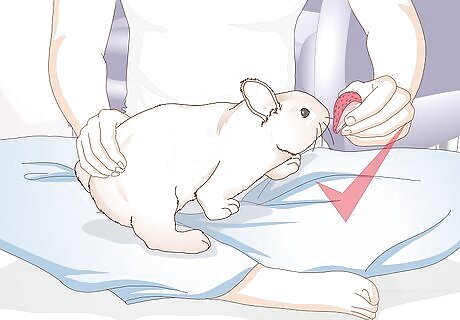
Offer positive reinforcement. Reward your rabbit if you see her approach the furniture, but she doesn't chew it. There are several ways you can reward good behavior. Give her praise (like saying, "good girl"), spend time petting her, or give her a small food treat. Do this as soon as you notice the good behavior. This way, your rabbit will associate the act with the reward. You can also reward your rabbit when you see her chewing appropriate things, like the branches, chew toys, or cardboard. Rabbits learn better with positive reinforcement than discipline.


















Comments
0 comment